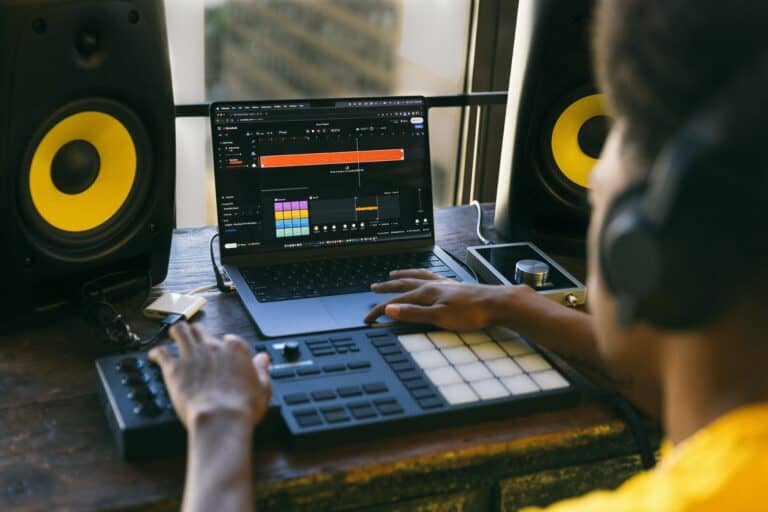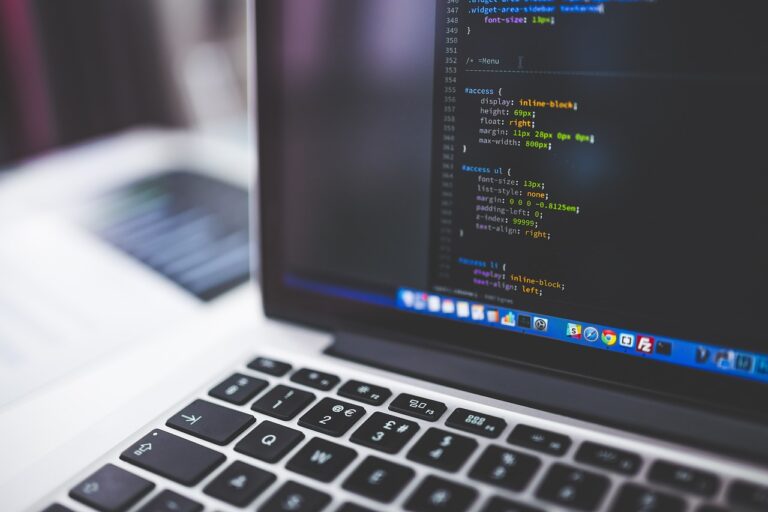Which Three Parts of the Computer Receive Input: A Complete Guide
Disclosure: Some of the links in this article may be affiliate links, which can provide compensation to me at no cost to you if you decide to purchase a paid plan. We review these products after doing a lot of research, we check all features and recommend the best products only.
Computers have revolutionized the way we work, learn, and connect with each other. But have you ever wondered how a computer receives input data? In this blog post ,Which Three Parts Of The Computer Receive Input: keyboard, mouse, modem, and microphone. We will dive deeper into these input devices and explore how they function.
Have you ever thought about how computers would be without these input devices? We will also discuss the processing of inputs and how it enhances efficiency when using these devices. Lastly, we will provide tips on how to effectively leverage these components, including the hard disk for long-term storage, to maximize productivity. Join us as we take a closer look at the backbone of computer interaction.
Unveiling Which Three Parts Of The Computer Receive Input
Computers heavily rely on input devices to receive commands and data, allowing users to interact and perform various tasks. These input receivers serve as the essential interface between humans and computers, facilitating communication. Three key input receivers play a crucial role in this process: the keyboard, mouse, and microphone.
The keyboard, a common and familiar input device, enables users to input text and commands into the computer. It consists of a set of keys representing letters, numbers, symbols, and additional functions. By pressing these keys, users can provide specific instructions and type in text for various applications.
Similarly, the mouse allows for precise navigation on the computer screen through its movement and buttons. By moving the mouse across a flat surface, users can control the cursor’s position and select items on the screen, making it an essential tool for graphical interfaces.
On the other hand, the microphone converts sound into data, enabling users to provide audio input to the computer. Through speech recognition technology, the microphone allows for voice commands and dictation, making it a valuable input receiver for hands-free interactions.
Understanding the functions of these input devices is crucial for effectively using a computer. Whether it’s typing a document, navigating a website, or giving voice commands, these input receivers enhance the user experience and streamline interactions with the computer.
Keyboard: The Essential Interface
The keyboard serves as the essential interface for input on a computer. It is the primary device used for entering text and commands. With its set of keys that correspond to letters, numbers, symbols, and functions, users can effectively type, navigate, and execute commands with ease. Keyboards come in various layouts, including the popular QWERTY, AZERTY, and QWERTZ configurations.
In addition to its basic functions, the keyboard offers numerous shortcuts and key combinations that enhance productivity and efficiency. These shortcuts allow users to perform tasks quickly and efficiently, saving valuable time and effort. Whether it’s copying and pasting text, saving files, or opening applications, these shortcuts prove to be invaluable.
One such shortcut is the ability to open a new tab (Ctrl+T) with just a keystroke. This feature allows users to quickly access multiple webpages without the need to manually click on the browser’s tab option. By incorporating this convenient shortcut, users can seamlessly navigate between different tabs and increase their browsing efficiency.
Moreover, the keyboard is an essential tool for individuals who work extensively with text-based applications, such as writers, programmers, and data entry professionals. Its tactile feedback and key travel provide a satisfying typing experience, making it a preferred input method for many.
By understanding the different parts of the computer and their respective functions, users can fully utilize the capabilities of the keyboard and optimize their workflow. Whether it’s inputting text, executing commands, or navigating through applications, the keyboard remains a fundamental and indispensable component in the realm of computer input devices.
Mouse: Navigating with Precision
The mouse is an essential input device that enables users to navigate with precision on a computer screen. With its ability to control the cursor, the mouse allows for seamless interaction with graphical elements. This input tool typically comes equipped with two or more buttons, allowing users to select, click, and drag items effortlessly. Additionally, the presence of a scroll wheel provides added functionality for scrolling through documents or webpages.
Advanced mice have taken navigation a step further by incorporating programmable buttons and customizable settings. This feature allows users to tailor the mouse to their specific needs and preferences, enhancing productivity and efficiency. Furthermore, sensitivity and precision can be adjusted, ensuring smooth and accurate movements of the cursor.
In the realm of NLP terms, the mouse plays a crucial role as one of the primary input devices of a computer. While the keyboard enables users to input text, the mouse complements this functionality by facilitating precise navigation and interaction with the graphical user interface. Combined with the other input devices mentioned in the previous sections, such as the keyboard and microphone, the mouse completes the trifecta of input receivers that enable seamless communication between humans and computers.
Diving Deeper into the World of Input Devices
Input devices in the world of computing go beyond the traditional keyboard, mouse, and microphone. Various specialized input devices exist to cater to specific tasks and industries.
For instance, graphics tablets are used by digital artists to create intricate digital art, while game controllers enhance the gaming experience for avid gamers. And in the retail industry, barcode scanners have become indispensable tools for efficient inventory management. These examples highlight the diverse range of input devices available to users.
The availability of different input devices is essential because user preferences and requirements vary. Some individuals may prefer a graphics tablet for its accuracy and sensitivity when working on digital art, while others may find a game controller more comfortable when playing their favorite video games. By understanding these options, users can choose the most suitable input devices that align with their needs and enhance their productivity.
In addition to the standard input devices, other technological advancements have brought about newer input options. For instance, touchscreens have become increasingly prevalent in smartphones and tablets, allowing users to interact directly with the display. Voice recognition technology has also gained traction, enabling users to input text by speaking to their devices. These developments continue to expand the possibilities in the field of input devices.
By exploring the world of input devices and understanding how output devices like printers work, users can discover the range of choices available to them and make informed decisions based on their specific requirements. Whether it’s for creative endeavors, gaming, or everyday tasks, finding the right input device and output device, such as a printer, can greatly enhance the overall computing experience. So, dive deeper into the world of input devices and uncover the possibilities they offer.
Microphone: Converting Sound into Data
A microphone serves as an essential input device for computers, converting sound into digital data. With its ability to capture and record audio, it enables users to engage in various activities such as voice commands, voice chats, and audio recording. Microphones can come in different forms, either built-in or external, with different types like condenser and dynamic microphones.
Speech recognition technology heavily relies on accurate microphone input for transcription and control. The quality and positioning of the microphone play a significant role in the clarity and fidelity of the recorded audio.
To purchase input device :https://www.amazon.com/s?k=keyboard+%2Cmouse+microphone&crid=16ZBM4B1YHWF1&sprefix=keyboard+%2Cmouse+microphone%2Caps%2C331&ref=nb_sb_noss_2
How Do These Input Components Function?
Input devices play a crucial role in transmitting signals to the computer. The keyboard converts key presses into electrical signals, while the mouse captures movements and clicks through sensors. Microphones convert sound waves into digital data. These signals are then processed by the computer to execute desired actions.
Behind the Scenes: Processing of Inputs
Once input is received, the computer’s operating system and software analyze and interpret the data. The specific application or program being used plays a crucial role in how the input is processed. The computer then executes commands, displays text, or performs actions based on the input it receives.
The processing of inputs involves the use of various algorithms and data structures to handle different types of input. These algorithms and data structures are designed to efficiently process and manipulate the incoming data. For example, when dealing with input text, natural language processing (NLP) techniques can be applied to understand the meaning and context of the text.
Efficiency in input processing is essential for the overall performance of the computer system. If the processing is slow or inefficient, it can result in delays in executing commands or displaying information. Additionally, the speed and efficiency of input processing can impact other system operations, such as multitasking and responsiveness.
In conclusion, behind the scenes, the processing of inputs involves the interpretation of data by the computer’s operating system and software, executing commands or actions based on the input received. Various algorithms and data structures are used to handle different types of input efficiently. The speed and efficiency of input processing significantly affect the overall performance of the computer system.
Enhancing Efficiency with Input Devices
Efficient usage of input devices plays a crucial role in enhancing productivity. By learning keyboard shortcuts and hotkeys, users can save time and reduce their reliance on the mouse. This not only speeds up their workflow but also reduces the risk of repetitive strain injuries associated with prolonged mouse usage.
Customizing mouse settings and gestures further streamlines navigation and operation, allowing for a more seamless user experience. Additionally, utilizing voice commands through a microphone introduces a hands-free approach to computer operation, enabling users to perform tasks without physically interacting with their devices. Regular practice and familiarity with input devices are key in achieving optimal efficiency.
The more comfortable users become with their keyboards, mice, and microphones, the faster and more accurately they can input text, navigate interfaces, and execute commands. By leveraging these input devices effectively, individuals can unlock their full potential and maximize their productivity.
Tips to Effectively Leverage Keyboard, Mouse, and Microphone
To enhance your computer usage experience, here are some tips to effectively leverage the keyboard, mouse, and microphone. Firstly, practicing touch typing can significantly increase your typing speed and accuracy on the keyboard, allowing for faster and more efficient input. Customizing keyboard shortcuts for frequently used commands and functions can also save time and streamline your workflow.
When it comes to the mouse, using an ergonomic mouse and adjusting its sensitivity and pointer speed to your liking can help reduce strain and discomfort during long periods of computer use. These adjustments can also improve accuracy, ensuring smooth and precise navigation.
Lastly, voice recognition software and training your microphone for better accuracy can be a game-changer. Experimenting with voice commands allows for hands-free operation, giving you more flexibility in executing tasks.
By following these tips, you can optimize your usage of these essential input devices and enhance your overall productivity and efficiency while using the computer.
frequently asked questions
What If Computers Could Not Receive Inputs?
Without the ability to receive inputs, computers would be unable to interact with users. Tasks such as typing, navigating through software, and controlling applications would not be possible. Computers would lack the flexibility and adaptability provided by input devices.
similar blogs:
How To Reset Mercedes Computer After Battery Change: Expert Tips
How To Turn A Dell Computer On: Quick And Easy Guide
Conclusion
To summarize, the keyboard, mouse, and microphone are the three primary input receivers of a computer. They are crucial for interacting with the digital world and enhancing efficiency. The keyboard allows for textual input, the mouse enables precise navigation, and the microphone converts sound into data.
Understanding how these input components function and leveraging them effectively can greatly improve your computer usage experience. Just imagine if computers could not receive inputs – our ability to communicate, create, and navigate through digital platforms would be severely limited. So, make the most out of these input devices and explore the possibilities they offer in maximizing your computer’s capabilities.







